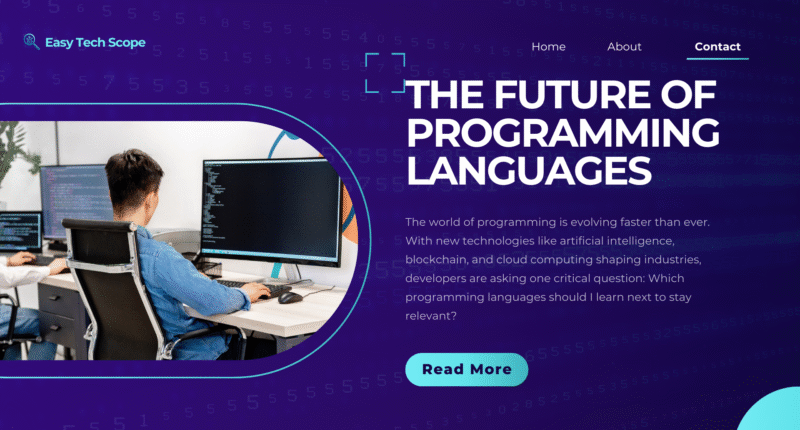The world of programming is evolving faster than ever. With new technologies like artificial intelligence, blockchain, and cloud computing shaping industries, developers are asking one critical question: Which programming languages should I learn next to stay relevant? Let’s explore the future of programming languages and highlight the most promising options for 2025 and beyond.
Why Programming Languages Keep Evolving
Technology never stands still. Every few years, new demands arise that push programming languages to adapt. Performance, scalability, security, and integration with emerging technologies are key drivers for these changes. For developers, this means staying flexible and continuously learning new languages to keep pace with innovation.
Languages Dominating the Present and Future
Python: The Language of AI and Data Science
Python remains one of the most versatile and widely used languages. Its simple syntax and massive ecosystem make it ideal for artificial intelligence, machine learning, data science, and automation. As AI continues to expand, Python’s role will only grow stronger.
JavaScript and TypeScript: Powering the Web
The web still rules the digital world, and JavaScript is its backbone. From interactive websites to full-scale applications, JavaScript dominates frontend development. TypeScript, with its static typing and improved scalability, is becoming the preferred choice for large projects. Both are essential for anyone aiming to build modern web applications.
Rust: The Future of Safe and Fast Systems Programming
Rust is gaining traction for its focus on safety, speed, and concurrency. It eliminates common bugs found in languages like C and C++, making it perfect for system-level programming, embedded systems, and performance-critical applications. Many major companies are now adopting Rust, marking it as a language to watch.
Go: The Cloud and Microservices Champion
Go, developed by Google, has become a favorite in cloud computing, DevOps, and microservices. Its simplicity, performance, and concurrency support make it ideal for scalable distributed systems. With the rise of cloud-native applications, Go is here to stay.
Kotlin and Swift: Mobile Development Leaders
For mobile apps, Kotlin (for Android) and Swift (for iOS) are leading the way. Both offer modern features and strong community support. With mobile usage still climbing, these languages will remain highly valuable.
What Should Developers Learn Next?
The best language to learn depends on your career goals:
-
AI/ML and Data Science → Focus on Python.
-
Web Development → Master JavaScript and TypeScript.
-
Systems and Security → Learn Rust.
-
Cloud and Backend → Explore Go.
-
Mobile Apps → Invest in Kotlin and Swift.
Diversifying your skill set is the smartest strategy. Instead of sticking to one language, learning multiple based on your career direction will open more opportunities.
Conclusion: Stay Ahead by Learning Continuously
The future of programming languages is not about one language replacing another but about developers using the right tools for the right tasks. Python, JavaScript, TypeScript, Rust, Go, Kotlin, and Swift are the key players shaping the next era of software development. By staying adaptable and learning continuously, you can future-proof your programming career.








